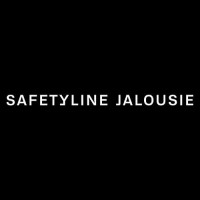-
Australia
Copyright © 2025 Powered by BCI Media Group Pty Ltd
Confirm Submission
Are you sure want to adding all Products to your Library?
Contact Detail

Elevating Energy Efficiency: Vacuum Glazing in Modern Construction"
Windows play a vital role in building design, providing natural light, ventilation, and a connection to the outside world, while also contributing to the overall aesthetic and comfort of a space. However, as boosting energy efficiency and cutting carbon emissions become top priorities in modern construction, it is essential to find ways to optimize the performance of windows. Traditionally, triple glazing has been the go-to solution for achieving the best thermal and acoustic insulation. While effective, it comes with trade-offs, such as thick glass that can reduce light transmission and add bulk to the window design.
A promising technology that overcomes these limitations is vacuum insulated glazing (VIG). Offering exceptional insulation properties in a much thinner profile, VIG presents a game-changing solution for those seeking to enhance energy efficiency without compromising on aesthetics or performance.
The trend of adopting vacuum insulated glass is increasing globally within the building and construction industry, including growing uptake in Australia.
What is Vacuum Glazing?
Vacuum glazing is an innovative approach to insulated glass design. Instead of using a gas-filled cavity (typically Argon or Krypton) between two panes of glass, vacuum glazing utilizes a vacuum gap to provide insulation. This vacuum effectively eliminates any air convection, allowing for significantly improved thermal performance compared to traditional double glazing. The result is a glass unit that offers exceptional insulation properties in a much thinner profile.

Both vacuum glass and double-glazing aim to enhance energy efficiency, insulation, and noise reduction; however, vacuum glass performs better in several important aspects.
Benefits of Vacuum Glazing vs. Traditional Double or Triple-Glazed Units
1. Superior Thermal Performance
Vacuum glazing provides remarkable thermal insulation due to the absence of gas or air in the cavity. By creating a vacuum gap, it significantly reduces heat transfer, leading to lower energy loss and enhanced energy efficiency. With thermal performance U-values as low as 0.4, this improved insulation is especially valuable in regions with extreme temperatures, where maintaining a stable indoor climate is crucial for comfort and reducing energy costs.
2. Thin Profile
Unlike traditional double or triple-glazed units that can be bulky, vacuum glazing maintains a slim profile, as thin as 6mm to 8mm. This allows for more elegant design possibilities, as it can achieve the sleek appearance of single glazing while providing the insulation benefits of triple glazing. Its thinness is particularly advantageous in retrofitting projects where space and weight considerations are critical.
3. Condensation Resistance
The vacuum-sealed gap in VIG is less prone to moisture infiltration, a common issue with double glazing that can lead to condensation, mold growth, and reduced insulation performance over time. Vacuum glazing addresses this issue by maintaining the interior surface temperature above the dew point, which helps prevent condensation from forming. This ensures clearer visibility and better performance, especially in cold weather.
4. Enhanced Soundproofing
In addition to thermal insulation, vacuum glazing also excels in sound insulation, particularly against low and middle-frequency noise. This makes it an ideal choice for buildings in noisy urban environments where reducing sound transmission is important for occupant comfort.
5. Lightweight Design
Vacuum glazing is significantly lighter than triple glazing, making it easier to handle and install. The reduced weight also has logistical benefits, such as lower transportation costs and less structural stress on a building.
6. Longer Lifespan
Vacuum glazing units are built to last over 25 years, which is significantly longer than the average 15-year lifespan of traditional insulating glass. The use of durable sealing materials helps maintain the vacuum over time, ensuring sustained high performance and reducing the need for window replacements.
Addressing Common Concerns About Vacuum Glazing
1. "It's Too New – I’m hesitant to use it"
2. "It Has Lower Impact Resistance"
3. "Concerns About Edge Sealing"
Conclusion
Vacuum glazing represents a significant advancement in window technology, providing outstanding thermal and acoustic performance in a thinner profile. By overcoming many limitations of traditional glazing systems, it presents an effective solution for enhancing energy efficiency in buildings.
As the construction industry moves toward sustainable practices, embracing innovations like vacuum glazing will be crucial in achieving energy efficiency goals. By addressing common objections and highlighting its advantages, we can foster a deeper understanding of this technology and its potential to shape the future of construction.
For questions about vacuum glass and how its benefits can be integrated into Safetyline Jalousie's louvre window systems, please reach out to our Business Managers for further information.
P: 1300 863 350



